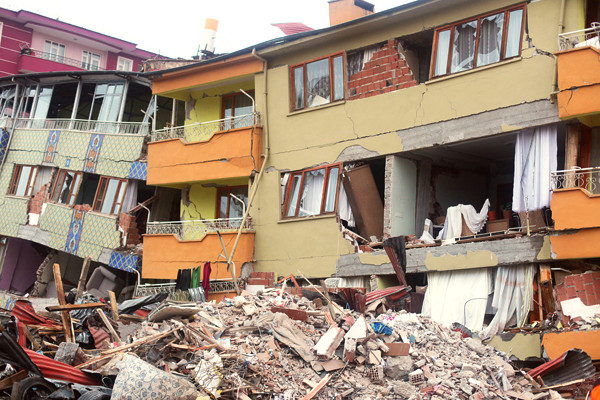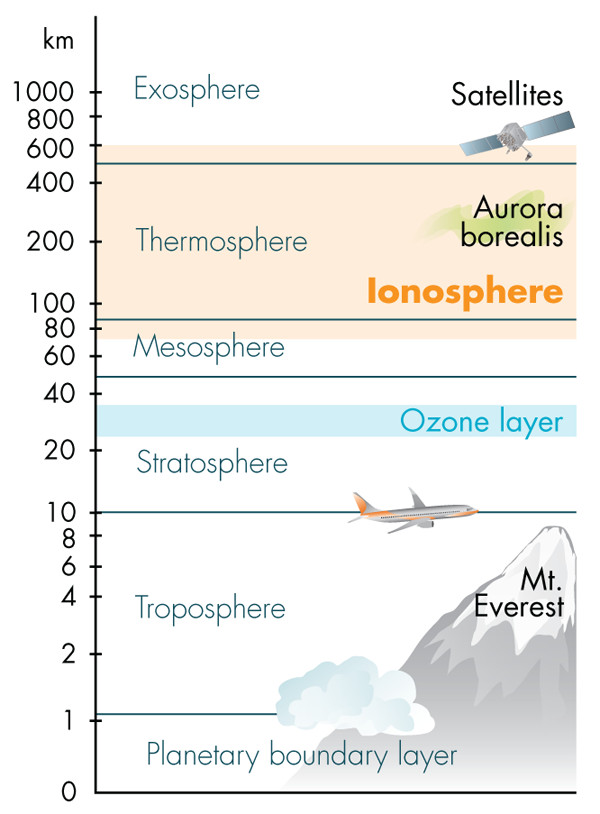
by Mary Caperton Morton Thursday, May 15, 2014

Credit: Copyright Shutterstock.com/Prometheus72.
On Jan. 12, 2010, a magnitude-7 earthquake rocked Haiti’s capital, Port-au-Prince, destroying much of the city and killing more than 200,000 people. Satellite records of atmospheric electron activity high above the island reveal an unusual pattern of behavior in the ionosphere in the months leading up to the quake — information that could be used in the future to forewarn of major earthquakes.
Scientists have long known that some minerals — quartz, for example — can produce electricity when deformed under pressure, an effect called piezoelectricity. This phenomenon has been replicated in the lab by applying stress to a slab of granite and measuring the ensuing electrical current.
“At a certain amount of stress, you start seeing a flow of electrons,” says Pierre-Richard Cornely, an electrical engineer at Eastern Nazarene College in Quincy, Mass., who presented new research on the phenomenon last December at the annual meeting of the American Geophysical Union in San Francisco, Calif. “In theory, this amount of stress can be likened to the stress inflicted on rocks leading up to an earthquake.”

New research shows that electron activity in the ionosphere in the months prior to major earthquakes could potentially be used to forewarn of an earthquake. Credit: Kathleen Cantner, AGI
In the days, weeks and months before earthquakes, intense stresses on rocks along faults can create piezoelectric effects that produce free positive ions. When released into the atmosphere, these ions rise upward under the influence of Earth’s global electromagnetic field.
“Positive ions can travel upward at speeds of 20 to 30 meters per second,” says Friedemann Freund, a physicist at NASA at Moffett Field, Calif., who was not involved with the new study. The ions travel until they reach the ionosphere, an upper layer of the atmosphere between 85 and 600 kilometers above Earth’s surface.
Influxes of ions into the ionosphere have been well studied due to their influence on radio communications, which are impacted by ion concentrations in the ionosphere. Fluxes of solar radiation in Earth’s magnetic field can cause electrical turbulence and disrupt radio waves. Cornely’s research suggests that the same effect can also be generated by earthquakes.
To study the changes in the ionosphere before, during and after the 2010 Haiti quake, Cornely turned to electron density data gathered from a satellite known as Detection of Electro-Magnetic Emissions Transmitted from Earthquake Regions, or DEMETER, operated by the National Center for Space Studies in France. Influxes of positive ions can lead to ionospheric disturbances that increase the electron density of the ionosphere directly over the source of ions — in this case, the Haitian fault system.
Two months before the Jan. 12, 2010, earthquake, the satellite recorded statistically significant changes in the behavior of the ionosphere over Haiti, including a peak in electron density levels. “These changes peaked about one month before the earthquake and then dropped off completely a month after the event,” Cornely says. To make sure the pattern of behavior wasn’t seasonal, he also looked at data from the year before the 2010 event, but found no unusual activity. Similar electrical patterns have been detected before, during and after other major earthquakes, including the devastating magnitude-9 earthquake off the coast of Japan in March 2011.
Such information could be used to monitor potentially dangerous faults — with limitations, Freund says. “Rising ions are subject to the wind, so pinpointing the source of ions [such as an active fault] by monitoring the ionosphere 200 kilometers above the ground could prove extremely difficult,” he says. Potentially dangerous faults would also need to be identified and instrumented ahead of time, a common complicating factor in earthquake monitoring.
The DEMETER satellite is no longer operating, but similar information could also be gleaned from ground-based GPS networks, Cornely says. “It’s a bit more complicated, involving mathematical algorithms to derive electron density data from GPS stations, but it can be done,” he says.
Cornely is currently working to install such a network in his native Haiti in hopes of detecting mounting stresses before another earthquake strikes. “If we can set up a network of GPS stations around these faults, we might be able to detect changes well ahead of the next disaster.”
© 2008-2021. All rights reserved. Any copying, redistribution or retransmission of any of the contents of this service without the expressed written permission of the American Geosciences Institute is expressly prohibited. Click here for all copyright requests.